7 Methods to Motivate Your Team

Knowing how to motivate a team is a great skill for any manager to have. Before we each became managers – chances are you will have worked in motivated and not so motivated teams. Motivated teams are a much nicer place to work in plus they are more successful and deliver a lot more. Good for everyone and their careers.
Here are five stats from the Bureau of Labour Statistics to prove why motivation matters:
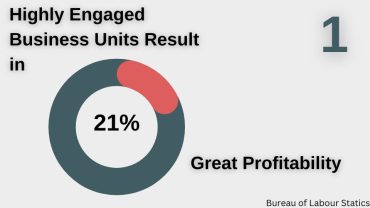
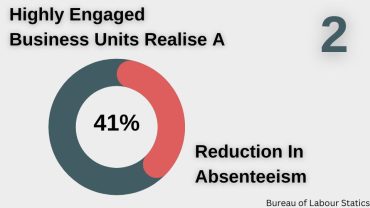
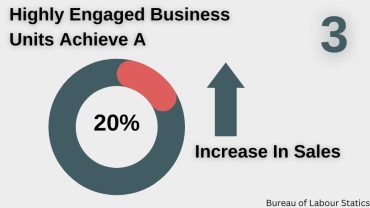


Wow. These differences in performance as a result of motivation are huge.
Learning how to motivate team members as a leader is 100% doable for all managers. I am taking you through 7 methods to motivate your team. Put these into practice and your team motivation will rise quickly.
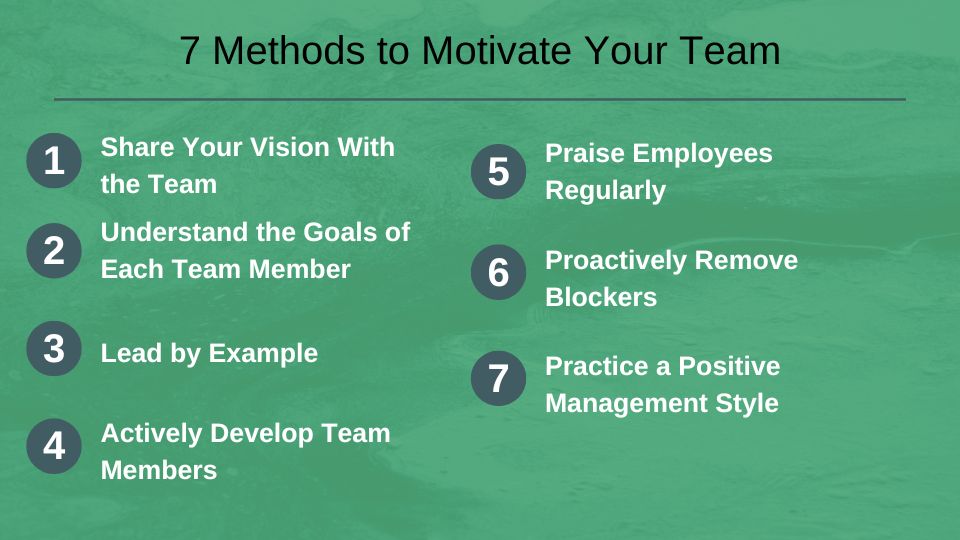
Watch on YouTube
Listen on Podcast
Before diving into the 7 methods to motivate your team, a really important starting point is having the confidence to be yourself. It is not true that you need to be a characteristic outgoing leader giving motivational speeches every five minutes to motivate a team. Be who you are, with your own style. Being genuine is a vital stepping-stone to building trust and strong relationships.
So with that in mind lets go through the 7 methods to motivate your team which you should put into practice in your own style.
Share your vision – The starting point in How to Motivate a Team
Share your vision for the team and how this fits into and supports the company’s vision and goals. Explain why you have chosen this direction of travel for the team and what it means for everyone in the team.
Your vision doesn’t have to be grand or have a wow factor. Sensible, practical and useful directions of travel are perfectly good. To motivate the team make it clear what you want to achieve and why you want the team to join you on the journey.
Link your vision for the team to their individual jobs. Link the company’s strategy to your vision for the team. This shows each individual how their efforts are helping towards the bigger picture and why they are valuable.
Once you have a clear direction of travel for the team and a clear vision of where you want to get to, then setting SMART goals for the team and each individual person is a lot easier.
Key for how to motivate employees is to make them feel their work is valuable and linked directly and clearly into the bigger picture.

Understand the goals of Each Team Member
Every member of your team is different. They have their own hopes and ambitions – both professional and personal.
Find out what these are. Book in regular one-on-one meetings with them. Ask them what they want to achieve professionally. When you know what your team members want to achieve and their timeframes you can outline where the team goals will help them achieve their own goals.
Spelling out where their personal goals align with team and company goals is a great action to motivate your team members. Don’t assume they will join the dots – join the dots for them.
Going through this process treats each team member as an individual rather than a cog in a machine. You also get to know them, build a better relationship with them, make them feel valued and show you care. All very big motivating factors for anyone.
Lead by example – the third method to motivate your team
Actions speak louder than words – by quite a long way. Team members will pay attention to your actions, your decisions and how you do what you do. This is what sets the tone and expectations for actions and behaviours across the team.
One of the key ways to motivate your team is to lead by example. If you expect your team to work hard, then seeing you work hard is going to motivate them to work harder.
I have always found it very motivational being in a team with a hardworking successful manager who lives by the same rules, they set for everyone. We all want to learn from our managers – not just the technical parts of our jobs but also how to act and behave at work to be successful.
So don’t view management as giving out orders and expecting employees to happily deliver. Much better is to show employees what you expect from them and ask them to do as you do.
Leading by example is a key action in how to motivate and inspire employees

Actively Develop Team Members – The fourth way to motivate your team
Every team member will want to progress their career in some way. Helping employees to do new things, to keep learning, and moving their careers forward are all great steps to motivate team members.
Create a personalised development plan with each of your employees, aligned to the team and company needs as much as possible. Take into account different ambition levels, different capabilities, and different requirements. Proactively developing team members is brilliant for motivating your team at work.
There are loads of ways to develop your team without needing a large budget:
- Provide a business book reading list or YouTube video list
- Organise on the job learning through new tasks or projects
- Organise peers to cross train other team members or give training on their areas of expertise
- Use weekly one-on-one meetings to mentor and coach team members
- Asking colleagues from outside the team to give short training sessions
And of course there are external routes which would need some budget such as:
- Classroom or online training courses
- Organising an external mentor
- Organising an external coach
Make the time and effort to proactively develop your team members. It is hugely motivating to work for a manager that cares about moving your career forward and takes action to make that happen.
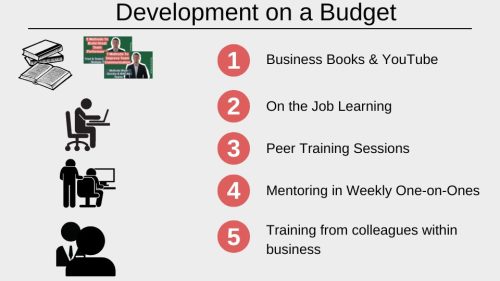
Praise regularly – the fifth method to motivate your team
Research has proven that you need to praise 3 times more than criticise to keep your team members motivated and engaged. We all like to receive praise for work well done. Doing great work and getting nothing back leaves us feeling disappointed and let down.
Praise and positive reinforcement encourage more good work, more good choices and more positive behaviour from team members. This is good for everyone. Make the time to look for good reasons to praise your staff.
There are loads of ways to praise to motivate your team members including:
- Taking them aside to say well done
- Praising them in your next one-on-one meeting
- Praise them in public – in team meetings, in front of other team members
- Give them prizes and make a fuss of them and what they have achieved
- Ask them to explain how they achieved what they did to other team members
- Mention them in the team newsletter
Giving praise regularly is a great way to motivate employees.
Give feedback regularly to employees too. Don’t shy away from giving negative or corrective feedback. Employees according to Gallup are 20 times more engaged after receiving negative feedback compared to no feedback.
Make your praise and feedback specific and give it quickly for maximum impact on motivation.

Proactively Remove blockers
When you are working hard to do a good job, having to fight against blockers is painful and demotivating. Example of blockers include:
- Pointless or poor processes
- Lots of information requests without obvious purpose or benefit
- Being repeatedly pulled off projects and tasks to do urgent but less important work
- Working alongside difficult or disruptive colleagues or those that don’t pull their weight
- Having to put up with conflicts within the team
As a manager, you are in a good position to work on removing as many blockers to your team members as practical.
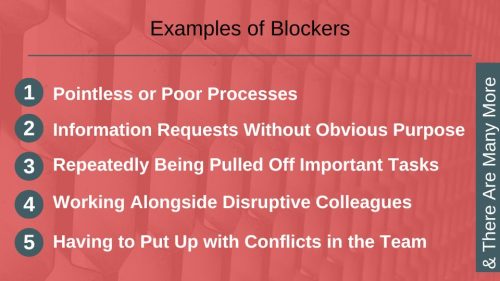
Keep asking team members “what should we stop doing, what should be change and what should we continue doing?” These are pretty safe questions for any employee to answer and you get great insights about what is annoying them by asking.
Deal with conflict between team members quickly so that annoyances or inconveniences don’t become full blown issues that impact those working with the parties in conflict.
When you have underperformers, disruptive employees or other difficult team members, it is very important that you take active steps to help these individuals change their behaviours. Failing to improve should result in removing them from the team is a final step.
By taking steps in a fair and reasonable way, you are signalling to the rest of the team that disruption will be dealt with quickly. This is very motivating for everyone, and in particular the higher performers.
Fighting for and protecting your team from unnecessary work, requests, politics and similar is another very motivating approach. Who doesn’t want to work for a manager that protects the team in a sensible way.
Work hard to remove the blockers.
Practice a positive Management Style
If you manage a team by doing your best to support and develop team members in exchange for the team working hard and working smartly and you use a collaborative open and honest management style, then the team is likely to be very motivated and engaged.
If you use a very traditional do as I tell you approach, combined with a lot of performance assessment and micromanagement, you are not offering the employees much other than their salary and chances are you are going to have disengaged unhappy employees.
As leader of the team, you set the tone of how the team operates and behaves. Every team member is watching each action you take, each decision you make and how you do everything. The team will take their cues from your actions and behaviour. Give them a positive example.
In addition to the areas we have already covered, the following approaches and behaviours are all great actions to motivate your team:
1 Practice Open communication
Creating open communication includes promoting conversations between team members, sharing information, asking team members for opinions and ideas, implementing cross training, or putting together cross team or business projects. Take action to improve and share knowledge and build good relationships.
2 Consistency is king
As a manager it is super important to be consistent with your actions, decisions, and behaviours. This way you treat all team members in the same way, and they can see you being consistent. Knowing you will get treated just the same as everyone else is very motivational.
3 Be Fair
Being fair is about treating others how you would like to be treated, it’s about giving employees a chance, it’s about being consistent with your expectations and demands, its about offering something in return other than just a salary.

4 Spend time listening
Listening is a very underrated skill and, in my view, essential to practice to be a good manager. Ask for ideas, ask for opinions, ask for solutions and listen to what you are being told. Pay attention to all the non-verbal communication within your team. Act on what you learn, and you will have a lot of motivated team members.
5 Promote from within
Promoting from within is another great way to motivate your team. Make promotion opportunities a reality when you can – it’s a great way to reward employees. Visibly consider internal staff members for promotion even if you hire externally in the end.
6 Don’t punish failure
When individuals and teams are learning and improving, mistakes will happen. To maintain the motivation of the team, don’t punish these mistakes. Rather use them as learning exercises for the individuals concerned and the team. Staying close to the work being undertaken through providing support and you can significantly reduce the size and risk of mistakes
7 Protect and fight for your team
Every business has competing demands for staff time, resources, and support. Think of all the projects being undertaken in any company at a given time. Because of this internal competition, teams can get pulled from pillar to post unless you protect and fight for your team. It is very motivational to work for a manger who – you know – has your back.
So there you have 7 methods to motivate your team plus 7 additional behaviours and approaches to develop a positive management style.
Start putting at least one method I have shared with you into practice today.
In Summary
As a manager you have a significant impact on and influence over your team and their motivation. How you motivate and inspire employees makes a huge difference to what your team will produce for the company – in some cases doubling their performance – and a motivated and happy team is a much nicer place to work than a team just going through the motions.
Please put into practice at least one of the methods I have shared with you today. Start with one and once that is up and running, add the next one. It won’t be long before you have all of these methods put into practice.
I know you will enjoy the results for the rest of your career!
Just to recap, the seven methods to motivate your team I have shared are
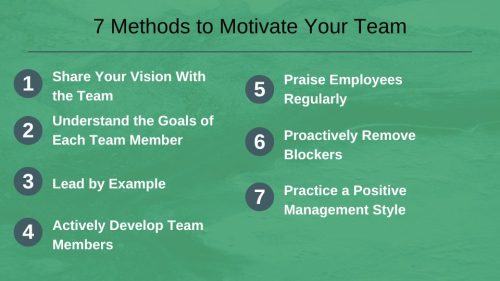

I have taken over multiple underperforming demotivated teams that the rest of the business criticises regularly.
I quickly employed each of the methods outlined.
It only took a few weeks before team members were smiling and joking when previously there had been silence and unhappy faces. Within a few months, the rest of the business was singing the teams praises.
Motivation is a big factor in team performance. Work hard to motivate your team.






